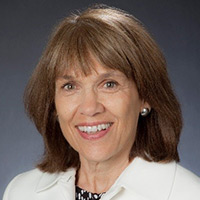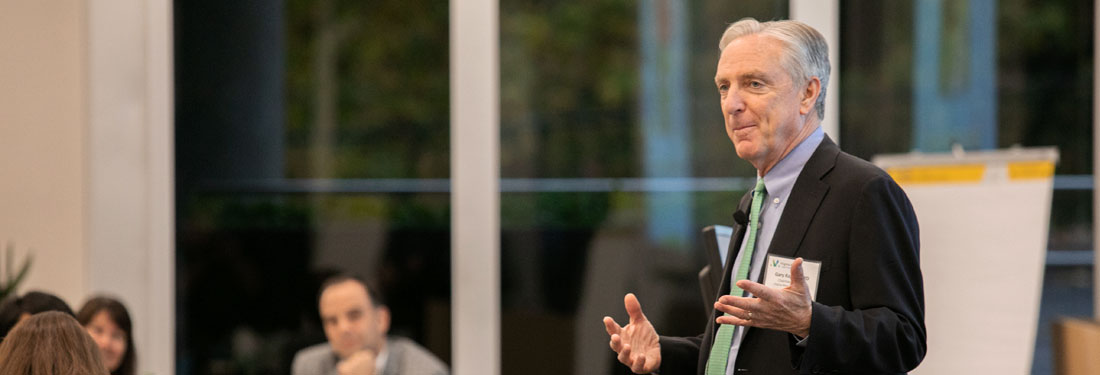The Health Care Executive’s Role in Addressing Burnout
I have been a health care leader at Virginia Mason Health System for over 30 years, as well as an executive sensei to other health care organizations. It has been my experience that burnout among our health care team members is often caused by the failure of health care leaders to evolve – to advance their mindsets, management methods and systems – fast enough to keep up with the increasingly challenging complexities in health care.
Virginia Mason has long prided itself on being an exceptional place to work. Founded nearly one hundred years ago as a physician group practice, Virginia Mason maintained a culture that values team work and quality. We believed that practicing in a group setting allows physicians to work collaboratively to provide the best possible care for patients, and to be supported in a rewarding work environment. However, that mindset is now far too simplistic.
In 1967, Peter Drucker, a management ‘guru’, wrote that hospitals were the most complex organizations ever created. They have certainly become even more so. Developments, including new technology, sub-specialization of medicine, and the Electronic Medical Records (EMR) system, are now layered on top of poorly designed processes.
Yet management systems that are intended to provide better support to physicians, nurses, and pharmacists have not been improved, and health care teams cannot keep up with the new demands and challenges they face. Patients and providers are paying the price for the absence of a sustainable management system, and the lack of urgency to implement continuous, meaningful process improvements.
Virginia Mason spent the past 20 years working to adopt a management system based on the core principles of continuous improvement, eliminating waste and defects, and demonstrating respect for people by giving staff the opportunity and expectation of driving improvement efforts. In this process, we learned a great deal from Toyota and other manufacturing companies who were pioneers of new methods of leading an organization.
When we began to change our mindsets as leaders, our (sensei) teachers encouraged us to go out into the organization to see what was happening on the front lines where care was being delivered to patients. The sensei would ask me to stand in the same place on a hospital floor, or in a clinic, and observe the movement of staff, the movement of supplies and equipment, and watch what was happening to the patient.
When we began to change our mindsets as leaders, our (sensei) teachers encouraged us to go out into the organization to see what was happening on the front lines where care was being delivered to patients.
It was awkward at first and I wasn’t sure what I was looking for. “No talking, no asking people questions” the sensei would tell me, “just watch.” Gradually, I was able to see the chaos and waste endemic in our organization. I saw nurses in the hospital leaving patient rooms multiple times to find supplies, and standing in line to get patient medications from the dispensing units. I watched physician assistants frequently interrupted by pages from nurses and residents, and physicians in the clinic hurriedly reviewing patients records, as the patients waited there in front of them, to see what preventative tests needed to be ordered. I also recall doctors apologizing to patients for how long they had waited to get an appointment, and then waited again to be called back into the exam room at their appointment.
The sensei asked me, “What are you doing about the rework (waste) that they are having to manage?” – referring to the nurses, doctors, medical assistants. They pointed out, “It is very disrespectful to your team members that they are having to do so many things that are wasteful because the processes are poorly designed. This is your job as the leader.” This fundamentally changed my view of what my role as a leader was and where I should focus my time.
Recently, I spoke with an Internal Medicine physician who had left Virginia Mason for several years to set up her own practice, looking for more control over her work, and then chose to return. When I asked her why she had chosen to come back to Virginia Mason, given that she had many choices, she said, all of the organizations she considered faced similar challenges but Virginia Mason was the only organization that seemed interested in making things better for providers.
She also appreciated that Virginia Mason had a method for identifying issues and making process improvements in an ongoing, sustainable way. The environment was different to her from when she was first at Virginia Mason. There was now an emphasis on having everyone participate in driving improvements – it was no longer top down. She was impressed by the strides in efficiency – lab and image results are available in minutes when it used to take hours.
We as leaders need to innovate our management systems in order to provide respect and support to our team members, so that they too can be adaptive and innovative in meeting challenges and change. A quote from W. Edward Deming, an engineer who helped the Japanese to rebuild their industry Post-World War II really resonates with me: “Bad process will beat good people every time.”
When I do rounds in our organization, I often see staff members trying to make a difference for their patients but running into barriers. As leaders we must change our mindsets, how we do our work, and be prepared to create the necessary urgency to engage the people doing the work to create and sustain good processes.
Originally published April 18, 2018, updated May 23 2021
Role of the Executive in Healthcare Improvement
Learn about our multi-part seminar series that breaks down the components of World Class Management necessary to sustain a high-reliability organization.
Executive and Board Coaching
Effective leadership is crucial to developing and sustaining a culture of improvement at any organization. Partner with our experts for virtual or on-site coaching to navigate this critical element of creating sustainable change.






